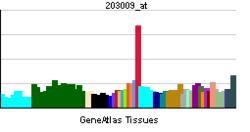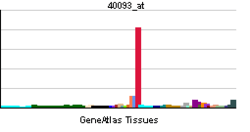BCAM
| BCAM | |||||||||||||||||
|---|---|---|---|---|---|---|---|---|---|---|---|---|---|---|---|---|---|
 |
|||||||||||||||||
| |||||||||||||||||
| Identifiers | |||||||||||||||||
| Aliases | BCAM, AU, CD239, LU, MSK19, basal cell adhesion molecule (Lutheran blood group) | ||||||||||||||||
| External IDs | MGI: 1929940 HomoloGene: 21149 GeneCards: BCAM | ||||||||||||||||
| |||||||||||||||||
| RNA expression pattern | |||||||||||||||||
  | |||||||||||||||||
| More reference expression data | |||||||||||||||||
| Orthologs | |||||||||||||||||
| Species | Human | Mouse | |||||||||||||||
| Entrez | |||||||||||||||||
| Ensembl | |||||||||||||||||
| UniProt | |||||||||||||||||
| RefSeq (mRNA) | |||||||||||||||||
| RefSeq (protein) | |||||||||||||||||
| Location (UCSC) | Chr 19: 44.81 – 44.82 Mb | Chr 7: 19.76 – 19.77 Mb | |||||||||||||||
| PubMed search | [1] | [2] | |||||||||||||||
| Wikidata | |||||||||||||||||
| View/Edit Human | View/Edit Mouse |
Basal cell adhesion molecule is a protein that in humans is encoded by the BCAM gene.[3] BCAM has also recently been designated CD239 (cluster of differentiation 239).
Function
Lutheran blood group glycoprotein is a member of the immunoglobulin superfamily and a receptor for the extracellular matrix protein, laminin. The protein contains five, N-terminus, extracellular immunoglobulin domains, a single transmembrane domain, and a short, C-terminal cytoplasmic tail. This protein may play a role in epithelial cell cancer and in vaso-occlusion of red blood cells in sickle cell disease. Two transcript variants encoding different isoforms have been found for this gene.[3]
Interactions
BCAM has been shown to interact with Laminin, alpha 5.[4][5]
References
- ↑ "Human PubMed Reference:".
- ↑ "Mouse PubMed Reference:".
- 1 2 "Entrez Gene: BCAM basal cell adhesion molecule (Lutheran blood group)".
- ↑ Parsons SF, Lee G, Spring FA, Willig TN, Peters LL, Gimm JA, Tanner MJ, Mohandas N, Anstee DJ, Chasis JA (2001). "Lutheran blood group glycoprotein and its newly characterized mouse homologue specifically bind alpha5 chain-containing human laminin with high affinity". Blood. 97 (1): 312–20. doi:10.1182/blood.v97.1.312. PMID 11133776.
- ↑ Kikkawa Y, Moulson CL, Virtanen I, Miner JH (2002). "Identification of the binding site for the Lutheran blood group glycoprotein on laminin alpha 5 through expression of chimeric laminin chains in vivo". J. Biol. Chem. 277 (47): 44864–9. doi:10.1074/jbc.M208731200. PMID 12244066.
Further reading
- Eyler CE, Telen MJ (2006). "The Lutheran glycoprotein: a multifunctional adhesion receptor.". Transfusion. 46 (4): 668–77. doi:10.1111/j.1537-2995.2006.00779.x. PMID 16584446.
- Lewis M, Kaita H, Coghlan G, et al. (1989). "The chromosome 19 linkage group LDLR, C3, LW, APOC2, LU, SE in man.". Ann. Hum. Genet. 52 (Pt 2): 137–44. doi:10.1111/j.1469-1809.1988.tb01089.x. PMID 2907851.
- Parsons SF, Mallinson G, Holmes CH, et al. (1995). "The Lutheran blood group glycoprotein, another member of the immunoglobulin superfamily, is widely expressed in human tissues and is developmentally regulated in human liver.". Proc. Natl. Acad. Sci. U.S.A. 92 (12): 5496–500. doi:10.1073/pnas.92.12.5496. PMC 41722
 . PMID 7777537.
. PMID 7777537. - Campbell IG, Foulkes WD, Senger G, et al. (1994). "Molecular cloning of the B-CAM cell surface glycoprotein of epithelial cancers: a novel member of the immunoglobulin superfamily.". Cancer Res. 54 (22): 5761–5. PMID 7954395.
- Rahuel C, Le Van Kim C, Mattei MG, et al. (1996). "A unique gene encodes spliceoforms of the B-cell adhesion molecule cell surface glycoprotein of epithelial cancer and of the Lutheran blood group glycoprotein.". Blood. 88 (5): 1865–72. PMID 8781446.
- Parsons SF, Mallinson G, Daniels GL, et al. (1997). "Use of domain-deletion mutants to locate Lutheran blood group antigens to each of the five immunoglobulin superfamily domains of the Lutheran glycoprotein: elucidation of the molecular basis of the Lu(a)/Lu(b) and the Au(a)/Au(b) polymorphisms.". Blood. 89 (11): 4219–25. PMID 9166867.
- El Nemer W, Rahuel C, Colin Y, et al. (1997). "Organization of the human LU gene and molecular basis of the Lu(a)/Lu(b) blood group polymorphism.". Blood. 89 (12): 4608–16. PMID 9192786.
- Parsons SF, Lee G, Spring FA, et al. (2001). "Lutheran blood group glycoprotein and its newly characterized mouse homologue specifically bind alpha5 chain-containing human laminin with high affinity.". Blood. 97 (1): 312–20. doi:10.1182/blood.V97.1.312. PMID 11133776.
- El Nemer W, Gane P, Colin Y, et al. (2001). "Characterization of the laminin binding domains of the Lutheran blood group glycoprotein.". J. Biol. Chem. 276 (26): 23757–62. doi:10.1074/jbc.M102978200. PMID 11319237.
- Kikkawa Y, Moulson CL, Virtanen I, Miner JH (2003). "Identification of the binding site for the Lutheran blood group glycoprotein on laminin alpha 5 through expression of chimeric laminin chains in vivo.". J. Biol. Chem. 277 (47): 44864–9. doi:10.1074/jbc.M208731200. PMID 12244066.
- Strausberg RL, Feingold EA, Grouse LH, et al. (2003). "Generation and initial analysis of more than 15,000 full-length human and mouse cDNA sequences.". Proc. Natl. Acad. Sci. U.S.A. 99 (26): 16899–903. doi:10.1073/pnas.242603899. PMC 139241
 . PMID 12477932.
. PMID 12477932. - Shin BK, Wang H, Yim AM, et al. (2003). "Global profiling of the cell surface proteome of cancer cells uncovers an abundance of proteins with chaperone function.". J. Biol. Chem. 278 (9): 7607–16. doi:10.1074/jbc.M210455200. PMID 12493773.
- Zhang H, Li XJ, Martin DB, Aebersold R (2003). "Identification and quantification of N-linked glycoproteins using hydrazide chemistry, stable isotope labeling and mass spectrometry.". Nat. Biotechnol. 21 (6): 660–6. doi:10.1038/nbt827. PMID 12754519.
- Crew VK, Green C, Daniels G (2004). "Molecular bases of the antigens of the Lutheran blood group system.". Transfusion. 43 (12): 1729–37. doi:10.1111/j.0041-1132.2003.00600.x. PMID 14641871.
- Zen Q, Batchvarova M, Twyman CA, et al. (2004). "B-CAM/LU expression and the role of B-CAM/LU activation in binding of low- and high-density red cells to laminin in sickle cell disease.". Am. J. Hematol. 75 (2): 63–72. doi:10.1002/ajh.10442. PMID 14755370.
- Kroviarski Y, El Nemer W, Gane P, et al. (2004). "Direct interaction between the Lu/B-CAM adhesion glycoproteins and erythroid spectrin.". Br. J. Haematol. 126 (2): 255–64. doi:10.1111/j.1365-2141.2004.05010.x. PMID 15238148.
- Drewniok C, Wienrich BG, Schön M, et al. (2005). "Molecular interactions of B-CAM (basal-cell adhesion molecule) and laminin in epithelial skin cancer.". Arch. Dermatol. Res. 296 (2): 59–66. doi:10.1007/s00403-004-0481-4. PMID 15278364.
- Gerhard DS, Wagner L, Feingold EA, et al. (2004). "The status, quality, and expansion of the NIH full-length cDNA project: the Mammalian Gene Collection (MGC).". Genome Res. 14 (10B): 2121–7. doi:10.1101/gr.2596504. PMC 528928
 . PMID 15489334.
. PMID 15489334. - Cheng J, Kapranov P, Drenkow J, et al. (2005). "Transcriptional maps of 10 human chromosomes at 5-nucleotide resolution.". Science. 308 (5725): 1149–54. doi:10.1126/science.1108625. PMID 15790807.
- Vainionpää N, Kikkawa Y, Lounatmaa K, et al. (2006). "Laminin-10 and Lutheran blood group glycoproteins in adhesion of human endothelial cells.". Am. J. Physiol., Cell Physiol. 290 (3): C764–75. doi:10.1152/ajpcell.00285.2005. PMID 16236823.
External links
- BCAM protein, human at the US National Library of Medicine Medical Subject Headings (MeSH)
This article incorporates text from the United States National Library of Medicine, which is in the public domain.